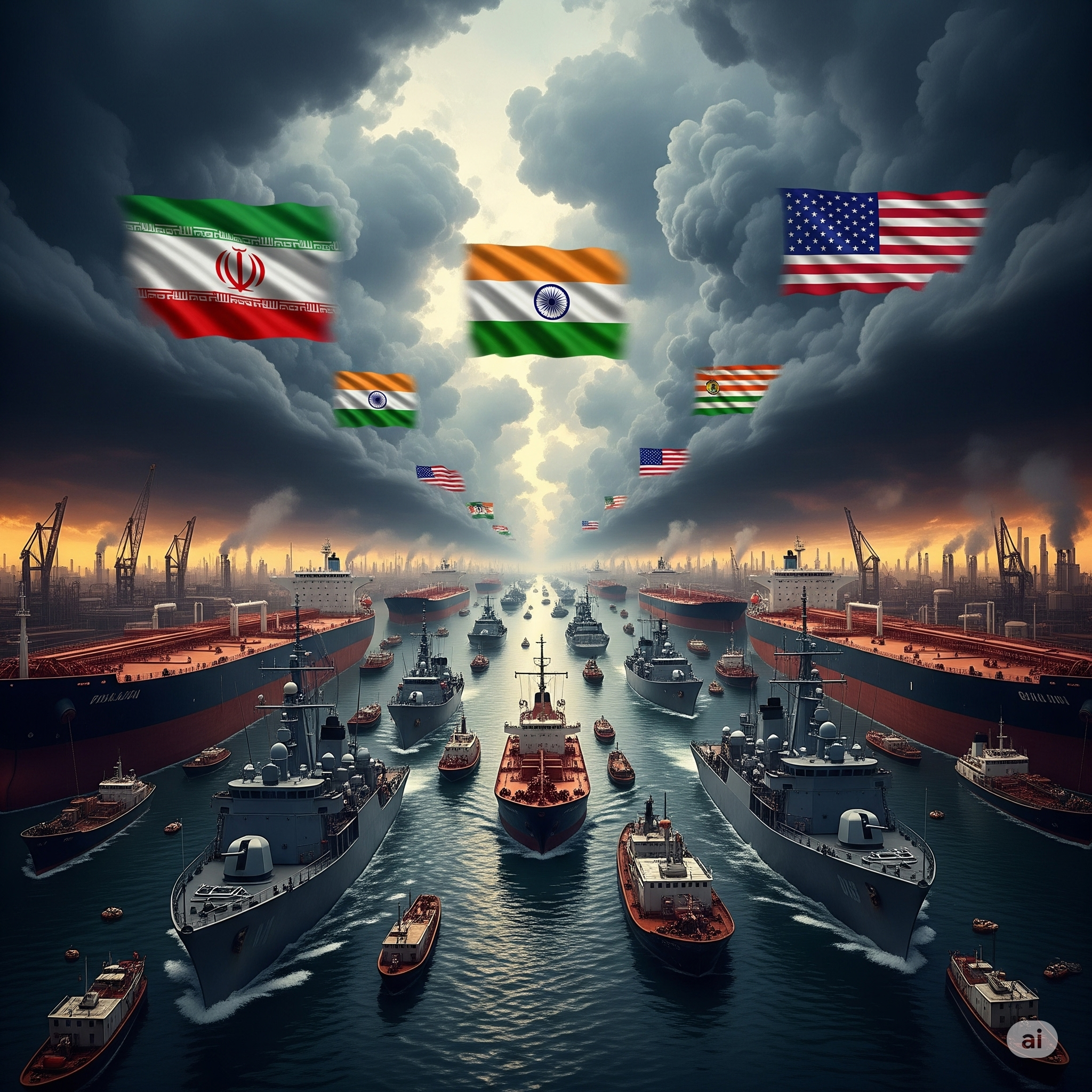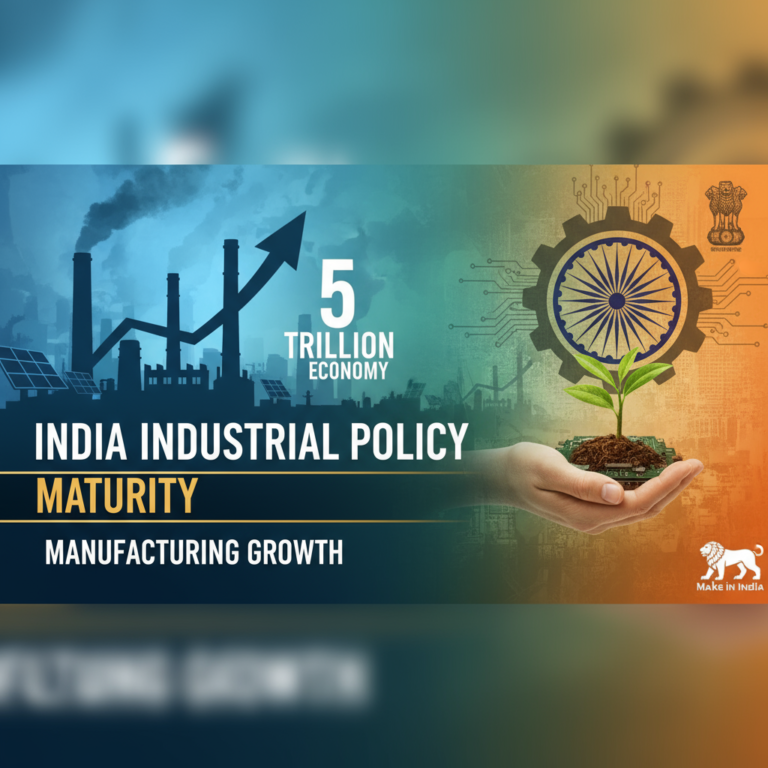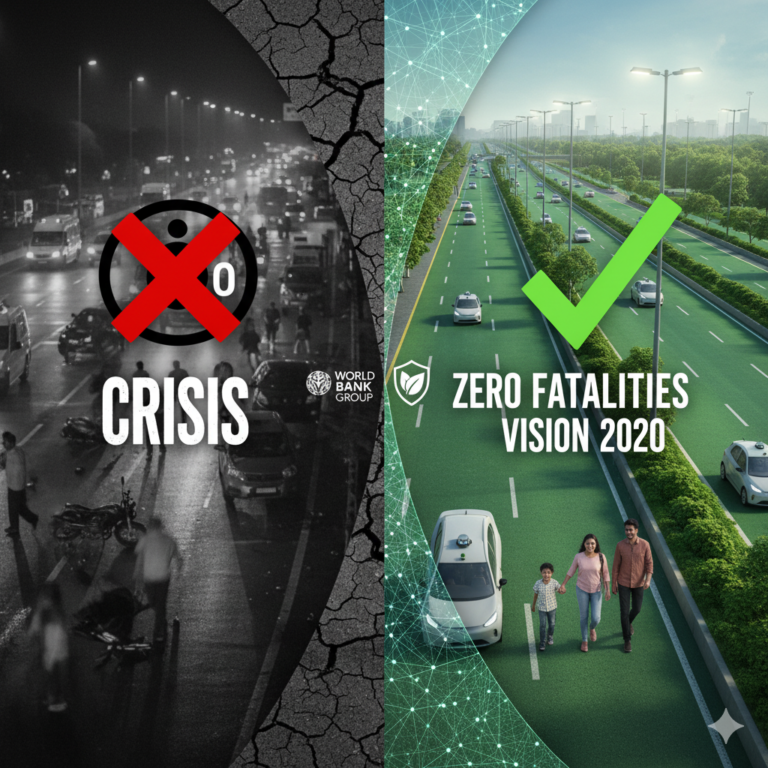✅ In-Short:
- Strait of Hormuz handles 20%+ of global oil flow.
- India imports over 60% of its oil via this chokepoint.
- Conflict here impacts fuel prices, inflation, and national security.
- India is expanding naval presence and diversifying suppliers.
- Chabahar Port and INSTC offer long-term strategic alternatives.
A Narrow Strait with Global Consequences
The Strait of Hormuz, just 33 kilometers wide at its narrowest point, is often called the world’s most dangerous oil chokepoint. Nestled between Iran and Oman, this strategic maritime artery connects the Persian Gulf to the Arabian Sea, through which over 20% of the world’s oil passes daily. For many global powers, including the United States, China, and the European Union, any disruption here is a red alert. But for India, this narrow waterway represents a lifeline for its energy security, trade dynamics, and geostrategic posture.
In this essay, we delve into the geopolitics, technical dynamics, and regional conflicts surrounding the Strait of Hormuz, and analyze why its stability—or volatility—is of critical interest to India.
1. Understanding the Strait of Hormuz: Geography Meets Geopolitics
1.1 Location and Physical Dimensions
The Strait of Hormuz lies between Iran (north) and Oman & the UAE (south). Though relatively narrow, it allows for two 2-mile-wide shipping lanes—one for outbound and one for inbound traffic—separated by a 2-mile buffer zone. The International Maritime Organization (IMO) designates it as a Transit Passage, which means freedom of navigation is protected under international law.
1.2 Volume of Oil and Gas Transit
- Oil Transit: Roughly 17–20 million barrels per day (mb/d) pass through the Strait. That’s over 1/5th of global oil consumption.
- LNG Transit: Qatar, one of the largest LNG exporters, sends 30% of global liquefied natural gas (LNG) via this chokepoint.
Any blockade, military conflict, or disruption in the Strait sends shockwaves across energy markets.
2. Strategic Significance: A Flashpoint for Global Conflict
2.1 U.S.-Iran Tensions: A Recurring Crisis
Iran has repeatedly threatened to close the Strait in response to U.S. sanctions or military presence. In 2019, following the U.S. withdrawal from the Iran Nuclear Deal (JCPOA) and the killing of Iranian General Qassem Soleimani, Iranian naval forces seized foreign oil tankers, raising concerns over commercial shipping safety.
2.2 Maritime Security and Naval Build-up
The U.S. Fifth Fleet, stationed in Bahrain, and the International Maritime Security Construct (IMSC) patrol the region. Iran, on the other hand, has deployed speedboats, submarines, and coastal missile batteries, enabling it to engage in asymmetric naval warfare if needed.
This militarization makes the Strait a potential trigger zone for World War-level escalation.
3. The Strait and India: Energy, Economy, and Strategic Autonomy
3.1 India’s Dependence on Gulf Oil
India imports nearly 85% of its crude oil needs, with over 60% coming from Gulf nations like Iraq, Saudi Arabia, and the UAE—most of which transits via the Strait of Hormuz.
- In FY 2023–24, India imported over 1.2 billion barrels of oil, with approximately 750 million barrels transiting the Strait.
- India also imports LNG from Qatar through this route, crucial for power generation and city gas distribution.
Any disruption at Hormuz = fuel price hike, current account deficit stress, and economic slowdown.
3.2 Economic Impact: Beyond Oil
The Strait is also a vital trade artery. India’s exports and imports with the Gulf Cooperation Council (GCC)—worth over $200 billion—are directly vulnerable to disruptions in Hormuz.
Insurance premiums for shipping rise drastically during periods of conflict, driving up the cost of goods, reducing supply chain reliability, and causing inflationary pressures at home.
3.3 India’s Naval and Diplomatic Strategy
India has expanded its naval deployments under Mission Sagar and Operation Sankalp to ensure maritime security in the region. The Indian Navy’s presence in the Gulf of Oman, Arabian Sea, and Persian Gulf is part of a strategic doctrine called “Net Security Provider”.
India also maintains deep diplomatic engagement with both Iran and the Gulf monarchies to maintain balance and avoid taking sides—a challenging, yet necessary tightrope walk.
4. Risk Factors: Why the Strait Remains Vulnerable
4.1 Iran’s Military Capabilities
Iran controls key naval bases like Bandar Abbas and Qeshm Island, and its Islamic Revolutionary Guard Corps Navy (IRGCN) is trained in swarm tactics, underwater mines, and anti-ship missile deployment. In the event of a conflict, it can block, sabotage, or mine the Strait, causing a global oil shock.
4.2 Non-State Actors and Proxy Wars
Yemeni Houthi rebels, backed by Iran, have previously attacked oil tankers using drones and missiles. As asymmetric threats evolve, state and non-state actors have the ability to disrupt shipping without formal declaration of war.
4.3 Climate and Environmental Hazards
While the focus is usually on geopolitics, climate risks—like rising sea temperatures, increased salinity, and potential sea-level rise—also affect marine ecosystems and navigability. A disrupted ecology could impact fisheries, desalination plants, and shipping industries reliant on predictable water conditions.
5. What Can India Do? Pathways to Strategic Resilience
5.1 Diversification of Energy Sources
India is already working to reduce dependence on any one region:
- Importing from Russia, the U.S., and West Africa
- Investing in strategic petroleum reserves (SPR)
- Developing renewable energy capacity (solar, wind, green hydrogen)
Yet, the Gulf will remain indispensable in the short-to-medium term.
5.2 Enhanced Naval Surveillance and Partnerships
India can:
- Boost real-time satellite tracking and coastal radar chains.
- Participate in joint naval exercises (like IMX, Milan, or Zayed Talwar).
- Invest in Unmanned Surface Vehicles (USVs) and maritime drones for low-cost, high-efficiency patrolling.
5.3 Strategic Investments in Iran
India’s interest in the Chabahar Port (Iran) is part of a broader plan to bypass Hormuz and access Afghanistan, Central Asia, and Russia via the International North-South Transport Corridor (INSTC).
While U.S. sanctions have slowed progress, Chabahar remains a critical hedge against Strait-based risks.
Conclusion: Hormuz is Not Just a Strait—It’s a Strategic Lifeline
The Strait of Hormuz is more than a geographical entity—it is a strategic artery that controls the pulse of global energy, commerce, and military balance. For India, its significance is existential. From fuel security to foreign policy autonomy, India’s national interests are directly tethered to the stability of this chokepoint.
In a multipolar world where great powers compete, and regional tensions simmer, India must blend diplomacy, defense, and diversification to safeguard its energy future and maintain strategic balance. The Strait may lie thousands of kilometers from Delhi, but its tremors are felt in every Indian fuel pump, port, and policy decision.









+ There are no comments
Add yours